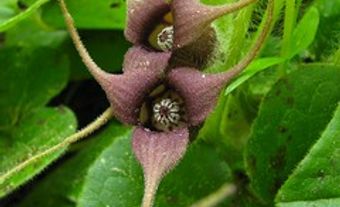This article was originally published in Maclean's Magazine on March 21, 2005
Health Officials Divided over Avian Flu
FOR MONTHS now the warnings have been relentless: the avian flu, rampaging through Southeast Asia, could morph into some sort of monstrous microbe. Tens of millions of people could die, say the experts at no less esteemed institutions than the World Health Organization and the U.S. Centers for Disease Control and Prevention. One widely quoted researcher in Pittsburgh went so far as to suggest this active H5N1 strain could mutate and kill as many as a billion people.
Currently, this particular strain has devastated commercial poultry flocks in Vietnam, Cambodia, South Korea, Thailand, Indonesia, Japan, Hong Kong and large parts of China. It has also killed 42 of the 55 people known to have been infected since January 2004. But while human fatalities are few, WHO and CDC are predicting H5N1 could trigger a massive global outbreak to rival the worst pandemic in history - the 1918 Spanish flu, which killed between 20 million and 50 million people in two years. That raises an equally big concern - what if the experts are wrong?
This much is true: H5N1 has a lot of people worried, and for a host of good reasons. Still, a significant segment of the health-care community questions whether this particular bird flu will be the one that triggers a pandemic. Skeptics argue another virus could trump H5N1 - and render today's multi-million-dollar vaccine investment worthless. Yet the warnings keep coming. Last month, Dr. Julie Gerberding, director of the CDC, told a Washington gathering that this current strain is the "most important threat we are facing right now." Two days later, at a bird flu conference in Vietnam, Dr. Shigeru Omi, the WHO's regional director for Asia and the Pacific, said the planet "is now in the gravest possible danger of a pandemic."
Neither the flu nor the threat of a pandemic should be taken lightly, says Dr. Richard Schabas, chief of staff at York Central Hospital in Richmond Hill, Ont., and a former chief medical officer of health for Ontario. What Schabas objects to is the "highly alarmist rhetoric" employed by the CDC and WHO, based as he sees it on imperfect science. "I think they're doing it because it helps them get their budgets approved and pushes them into the limelight," says Schabas. Saying this virus is about to cause a human pandemic, he adds, "goes well beyond any good science."
Schabas isn't alone. Earl Brown, a University of Ottawa professor who specializes in flu virus evolution, says that while H5N1 concerns him, suggestions it could kill one in six people on the planet are way out of line. "We really just don't have enough data and predictive power to say it's going to do that," says Brown. As well, critics such as Atlanta-based Wendy Orent, an anthropologist and author, say the notion that a flu pandemic is long overdue doesn't stand up to logic given we have only a vague idea of how frequently these things occur. "You know how many times they've threatened us with this?" asks Orent. "Since 1976 and swine flu, people have been saying we're overdue for a flu pandemic. Well, where is it?"
Three characteristics guarantee a pandemic: the virus has to be new enough that there are no defensive antibodies built up in the human population; it has to be deadly, which many are not; and it has to be easily transmitted by sneezing or coughing. Several outfits are now racing to develop a vaccine against H5N1, and the U.S. is hoping to start human trials this month. The likelihood, though, is that H5N1 will have to mutate significantly before it can do real damage, which would make a vaccine based on the virus's current genetic incarnation useless.
The WHO wants countries to stockpile H5N1 vaccine, which the U.S. is planning to do. Canada intends to hold off. Instead, it will have anti-viral drugs on hand to serve as a stopgap while it waits to see what vaccine is needed. Vancouver's ID Biomedical Corp. has been commissioned by Ottawa to develop a broad prototype. "When we get the actual pandemic strain, we won't be starting from zero," says Dean Linden, a company spokesman. The first precious dose would take about seven weeks to make, he says, "and it would be about 4½ months to produce the remaining 32 million" to inoculate everyone in Canada, which is the government's intention.
The 1918 Spanish flu killed so massively because of circumstances unlikely to repeat themselves, argues Paul Ewald, an evolutionary biologist at the University of Louisville in Kentucky. During the First World War, infected patients too weak to leave their beds on the front were loaded onto packed transports and shipped to overflowing hospitals. Many were sent home aboard jam-packed ships. The flu spread horrifically.
But today, despite international air travel and crowded cities with their packed commuter trains and office towers, very ill people would simply be too sick to leave home, argues Ewald. That reduces the likelihood of spreading a debilitating virus. "If you're so sick you can't get out of bed," he says, "you're not going to get on that train in the first place, so it doesn't matter how crowded it is." Also, says Ewald, viruses are strategic Darwinian survivors: natural selection favours milder versions that don't limit their own propagation by killing off their hosts.
WHO admits there is no evidence to suggest H5N1 transmits efficiently between humans. It may well mutate to become more of a human disease, but virologists simply don't know enough about that process to guess whether a reshuffling of H5N1's genetic deck would preserve its lethality. So far, those people who have become sick appear to have contracted the virus through eating undercooked poultry, slaughtering infected birds, or contact with chicken feces. Massive doses of the virus seem to be required to infect humans.
The H5N1 strain was first discovered in Hong Kong in 1997, where six of 18 hospitalized patients died. Infection was linked to bird farms and markets teeming with live poultry. It disappeared before re-emerging in 2003. Wild ducks, largely immune, spread the virus among other fowl. H and N refer to proteins on the surface of the viral particle, and there are at least 15 H types. Previously, only H1-, H2- and H3-type viruses have infected humans with any efficacy. So who can say H5 will be able to do the same?
There have been three serious pandemics in the past century: 1918 and two milder outbreaks, which nevertheless killed millions, in 1957 and 1968. Then there was the swine flu scare of 1976. A flu outbreak among soldiers at Fort Dix, N.J., was found to be related to the 1918 strain. One soldier died. Fifty million Americans were inoculated, even though early signs suggested the flu wasn't spreading. That vaccine was then shown to cause Guillain-Barré syndrome, a neurological disorder similar to polio that wound up killing at least 32 people.
In a typical year, up to two million people die of flu around the world. In a bad year, about 8,000 Canadians might die, usually elderly with weakened immune systems. Health Canada estimates between 11,000 and 58,000 Canadians could perish in a broad pandemic - the wide range is a reflection of the uncertainty in making predictions like this.
Are we better to be safe than sorry? The WHO and CDC raise legitimate concerns, and it's always smart to be prepared. That said, after such a prolonged cry of wolf, will the response be adequate if a big outbreak doesn't strike for some years yet? "What I've found is that, behind the scenes, many public health officials are distancing themselves from this global-health-crisis rhetoric," says Schabas. "It's not like terrifying someone about smoking or HIV, where you're actually asking them to do something about it," he says. "We're not asking people to do anything about avian influenza, apparently, except to worry about it."
See also INFLUENZA.
Maclean's March 21, 2005

 Share on Facebook
Share on Facebook Share on X
Share on X Share by Email
Share by Email Share on Google Classroom
Share on Google Classroom


